Your guide to discrete semiconductors
Follow articleHow do you feel about this article? Help us to provide better content for you.
Thank you! Your feedback has been received.
There was a problem submitting your feedback, please try again later.
What do you think of this article?
Many types of semiconductors are sold as part of circuits, oftentimes on an IC. These circuits are usually capable of carrying out any of a number of different functions in a device, which differentiates them substantially from discrete semiconductors.
A discrete semiconductor has a basic function that cannot be divided up into other functions. An IC, for example, may have a transistor, a diode and other components on it that can all perform different functions on their own or, working in conjunction as a circuit, can perform several functions together. A discrete semiconductor, conversely, can only perform one function. A transistor, for instance, is always a transistor and can only perform the functions associated with a transistor.
In today's world, most semiconductors are purchased as part of integrated circuits. For some applications, however, a discrete semiconductor provides the best possible solution for the engineering need and, therefore, discrete semiconductors have an important role in the marketplace for electronic components.
Because these are discrete devices, some of them need to be purchased along with other devices to achieve the desired functionality for which they are intended in any given circuit. Semiconductor devices perform functions ranging from regulating power to working as switches and much more. For some engineering needs, the ability to purchase discrete semiconductors makes prototyping and production affordable.
What types of discrete semiconductors exist?
Discrete semiconductors are very basic parts of electrical engineering and there are numerous different types. These semiconductors are inexpensive in most cases.
Bipolar Transistors: These devices are frequently incorporated into analog circuits. They are termed bipolar because they have carriers that utilize both negative and positive charges. In semiconductors, this means that they have both electrons and holes involved in their operation. Bipolar Transistors are used in integrated circuits quite heavily, but they are also sold as discrete units by most retailers.
Bridge Rectifiers: A bridge rectifier is built out of diodes that are arranged in a specific configuration: the namesake bridge. This bridge is able to convert an input of alternating current into direct current, a basic function for most electronic devices. These devices work with a two-wire AC input, have two diode drops in their design and offer full-wave rectification.
Because these are discrete devices, some of them need to be purchased along with other devices to achieve the desired functionality for which they are intended in any given circuit. Semiconductor devices perform functions ranging from regulating power to working as switches and much more. For some engineering needs, the ability to purchase discrete semiconductors makes prototyping and production affordable.
Constant Current Diodes: Constant current diodes are differentiated from others by the fact that they regulate current rather than voltage. The current passing through these diodes reaches a specific limit and then is kept at that level by the diode. These are known by several different names, including current-regulating diodes (CRD), current-limiting diodes (CLD) and diode-connected transistors.
Darlington Transistors: Darlington TransistorDarlington transistors are essentially two transistors in one. They both function to amplify the current they receive. The first transistor amplifies the current to a specific level and the second amplifies it even more. These parts are oftentimes used for space reasons, given that aDarlington transistor takes up less space on a board than would two transistors that were connected as discrete units. These are discrete components that actually take the place of two other discrete components.
DIACs: DIACs are most often employed as triggers for thyristors. They are also used for triggering TRIACs. These are thyristors themselves, being differentiated from most by the absence of a gate electrode.
Digital Transistors: A digital transistor has only two possible states in a circuit. It can operate as fully on, which is called saturation, or can operate as fully off, which is called cut off.
Double Triode Valves: Double triode valves are a type of vacuum tube that is associated with radio receivers. These valves include a triode that provides amplification. The two diodes included in the design are used for a rectifier, in one instance, and as a detector, in the case of the other diode.
Emitter-Switched Bipolar Transistors: An emitter switched bipolar transistor is actually two transistors in one. The design allows the component to block large voltages and to function at a very high speed.
Firing Circuit Commander Modules: Firing circuit commander modules provide phase control in circuitry. They are generally rated by the number of amps that they can handle.
HEMT Transistors: These are commonly incorporated into electronic devices such as cellular phones, radar equipment and other equipment that needs to function at a very high speed. HEMT transistors are faster than regular transistors. They are field effect transistors that function due to a combination of different materials used in the manufacture.
IGBT Transistor Modules: IGBT transistor modules are easily incorporated into a circuit and allow the inclusion of the fast switching capabilities of IGBT transistors in devices. These are very high-efficiency devices that are also responsible for much of the miniaturization of electronic devices that has been possible over past decades.
JFET Transistors: JFET stands for junction gate field effect transistor. They are frequently used in switching applications, though they can also be utilized to provide resistance that is dependent upon voltage. They have source and drain terminals and can either add resistance to electric current or, if they are utilized in a different fashion, cut off electric current altogether
MOSFET Transistors: MOSFET transistors are the most common transistor in use. Their usage spans both analog and digital circuitry. These are field effect transistors that are provided with four terminals, thought three terminals are most commonly hooked up. In many cases, two of the terminals are short-circuited within the device. This arrangement, in fact, is so common that these devices appear with three terminals in electrical diagrams. The devices include body, drain, gate and source terminals in their designs.
Pentode Valves: Just as the name implies, a pentode valve has five electrodes incorporated into its design. Most of these devices are vacuum tube designs, which have three amplification grids. The design is a very old one, having been first developed in the 1920s. Today, these devices are frequently utilized in industrial settings where high power is a factor.
PIN Diodes: PIN diodes are frequently found in high-voltage applications and in applications were fast switching is required. These are differentiated from other diodes by having an intrinsic semiconductor layer sandwiched between a p-type and n-type semiconductor layer.
Rectifier & Schottky Diodes: Schottky diodes are characterized by being capable of very fast switching and having a low forward voltage drop. These diodes have much in common with cat's whiskers detectors and, in fact, those devices can be considered to be early versions of these types of diodes. The low voltage drop characteristic of these diodes is what enables them to be utilized in very fast switching applications.
SIDACs: A SIDAC is similar to a DIAC, but is capable of handling higher currents and has a higher breakover voltage. The acronym stands for Silicone Diode for Alternating Current. It is a type of thyristor. When the voltage applied to these devices reaches or goes beyond the break overvoltage, the nonconducting nature of the device changes and it becomes conductive. When the current applied to the device falls below the holding current, it returns to a nonconductive state.
Switching Diodes: Switching diodes have a high electrical resistance when the voltage applied to them is below the voltage for which they are specified. When the voltage is increased to a level above the specified voltage, the resistance drops. This allows them to function as a switch.
Thyristor Modules: Thyristor modules are the same devices as silicon controlled rectifiers. These devices function as a switch. When the gate on the device receives a current pulse, it switches to and on condition. It will remain in the on condition until the voltage is reversed. These devices consist of four layers of semiconductor material, with alternating layers of p- and n-type semiconductors within them.
Thyristor Power Controller Assemblies: Thyristor power controller assemblies are used as trigger controllers that can provide some protection for digital circuits. If the output voltage rises above a specified level, the thyristor can function to break the circuit, protecting components.
Thyristor Trigger Modules: Thyristor trigger modules provide a means by which a thyristor is triggered, allowing them to be utilized for switching applications and for other applications. These can be chosen based on several different criteria, including whether they are designed to work with large currents or in highly inductive circuits.
Thyristors: Inside any thyristor are four layers of semiconducting material, which consist of alternating layers of n- and p-type semiconductors. These devices function as switches. When a specific amount of current is reached, the device will start conducting and will continue to do so unless the voltage is reversed across the component. These are frequently used as power controllers.
TRIACs: TRIACs function as electronic switches, being bidirectional and therefore allowing current to be conducted across them in either direction. The devices have a similar functionality to a pair of silicone-controlled rectifiers in an inverse parallel configuration and connected together at each of the rectifier's gates.
TVS Diodes: UJT (unijunction) transistors have three terminals but only one junction. They utilize n-type semiconductors on the base and p-type on the emitter. UJT transistors were formerly used in oscillators, particularly by hobbyists. Today, they are commonly used to trigger thyristors.
Varactor Diodes: These devices are also known as varicap diodes, variable capacitance diodes and tuning diodes. The devices are utilized as capacitors that are controlled by the voltage applied to them. Varacter diodes are commonly found in television sets, cellular phones and other devices that utilize FM transmitters or that receive FM transmissions. These devices change their capacitance as the voltage applied to them is increased or decreased.
Zener Diodes: Zener diodes are commonly used in roles where they provide a limiting factor on voltage, protection against too much voltage on a circuit or a voltage reference. These are very common components across the board in electronic devices.


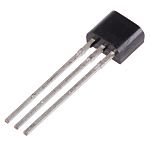
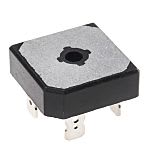
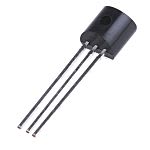
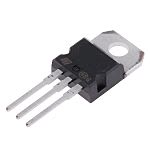
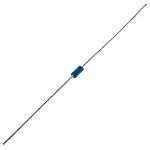
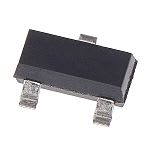
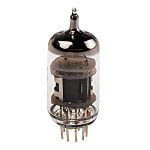
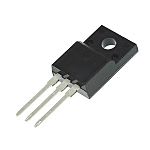
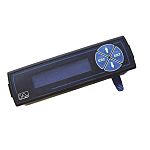
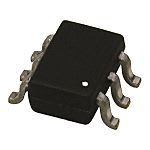
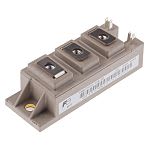
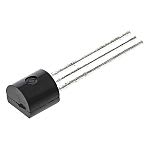
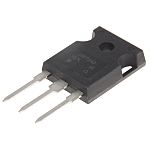

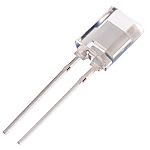
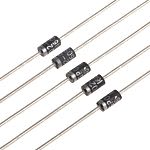
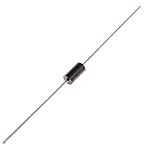
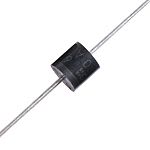
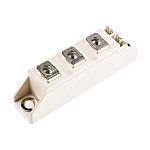
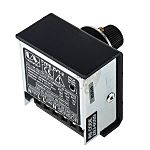
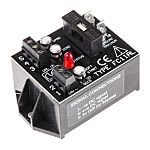
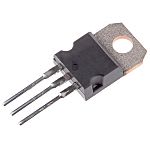
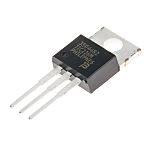
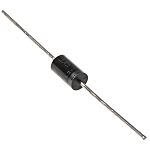
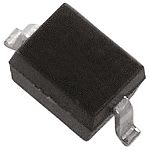
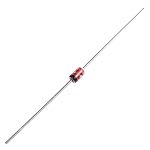
Comments